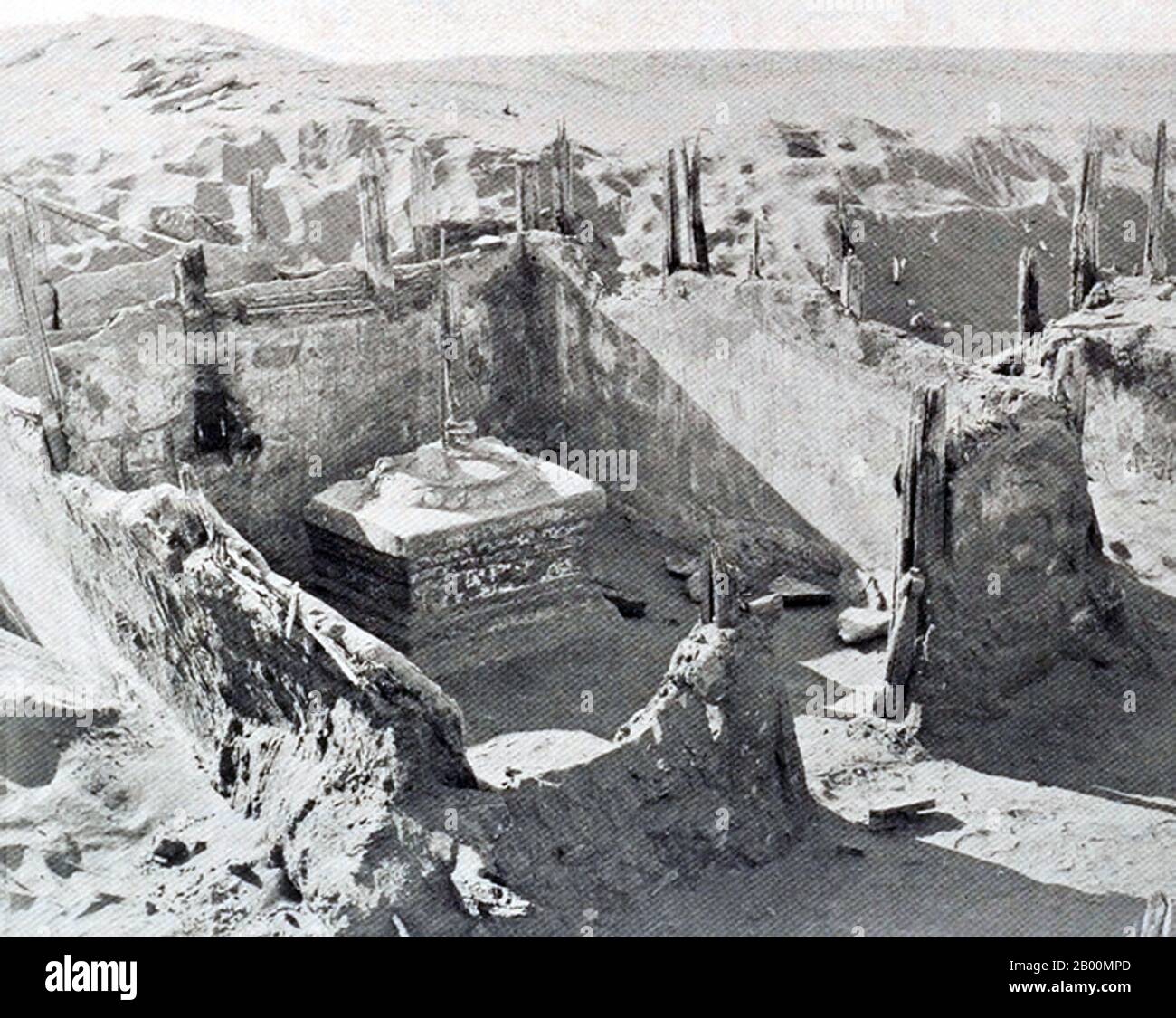China: Buddhist temple excavated by Sir Aurel Stein at Dandan Oilik in 1900. Dandan Oilik is a deserted historical town and desert oasis in the Taklamakan Desert of China. Dandan Oilik was an important (though small) centre of local Buddhism and trade on the Silk Road. Its name means 'Houses of Ivory' and has been the site of a small number of significant archaeological finds. Having been abandoned many hundreds of years ago, the oasis was found and lost to shifting desert sands several times. Most recently, a German expedition led by Christoph Baumer found the city.

Image details
Contributor:
CPA Media Pte Ltd / Alamy Stock PhotoImage ID:
2B00MPDFile size:
50.3 MB (1.5 MB Compressed download)Releases:
Model - no | Property - noDo I need a release?Dimensions:
4700 x 3744 px | 39.8 x 31.7 cm | 15.7 x 12.5 inches | 300dpiPhotographer:
Pictures From HistoryMore information:
This image could have imperfections as it’s either historical or reportage.
Dandan Oilik is a deserted historical town and desert oasis in the Taklamakan Desert of China. Dandan Oilik was an important (though small) centre of local Buddhism and trade on the Silk Road. Its name means 'Houses of Ivory' and has been the site of a small number of significant archeological finds. Having been abandoned many hundreds of years ago, the oasis was found and lost to shifting desert sands several times. Most recently, a German expedition led by Christoph Baumer found the city based on the accounts of previous explorers such as Sir Aurel Stein, and uncovered relics dating to the 7th and 8th centuries. They also marked its GPS position, and the city is now being studied by Chinese archeologists.